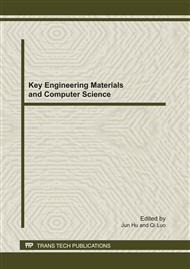p.359
p.363
p.369
p.373
p.377
p.382
p.388
p.394
p.399
Phase Detection for Nanometer Scale Metal Film’s Thickness Based on SPR Effect
Abstract:
It is found that the phase position of p-component of reflected light changes with the metal film thickness, while the phase position of s-component almost doesn’t change in the Surface Plasmon Resonance effect. S-polarized light is taken as reference and interferometry is adopted to turn the change of the phase position into the change of interference fringes position in the paper, and the film thickness can be derived from it. The simulation results indicated that, through making use of piecewise quadratic fitting on the phase data, the inaccuracy with the range of film thickness is between 30 and 80 nanometers is not more than 0.33 nm.
Info:
Periodical:
Pages:
377-381
Citation:
Online since:
August 2011
Authors:
Price:
Сopyright:
© 2011 Trans Tech Publications Ltd. All Rights Reserved
Share:
Citation:


